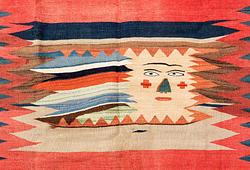Empire
A Swedish empire chiffonier, first half of the 19th century.
Width 97, depth 54, height 150 cm.
Damages and wear. Veneer damages and loss of veneer, scratches, marks, stains. Minor drycracks. Loose wooden lists and mountings included. Small key to cupboard included. Key missing. Keys missing.
Provenance
Bukowskis has been entrusted to sell part of the vast collections of Art and Antiques after Wivica Akarcrona Borell (1935-2019).
The foundation of the collection was laid by Rear Admiral/Flag officer Sten Ankarcrona (1861-1936). Ankarcrona first got a taste for the Asian Art while following his fathers’s footsteps serving as ‘enseigne de vaisseau’ for the French navy “la Royale” during the years 1885-1889, when his Fregatt sailed in the area. Ankarcrona continued to ad on to the collection, later in life when he was sent on a special mission to Japan in 1923. He brought back vast collections of lacquer, bronzes, textiles, ceramics.
In 1911 the family moved to the mansion like duplex next to Sturegatan in Stockholm. The elegant home and their summer house at Brevik by Erstaviken where Ankarcrona created a Japanese garden (1923-27) and even set up a complete Japanese building was documented in the the magazine 'Svenska Hem i ord och bild' in 1928, which provide us with a fascinating window into this golden age of European collecting. The world renowned collection received many prestigious visitors throughout the years, the guest book contains signature of both the Swedish king Gustav VI Adolf as well as the Japanese crown prince, later Emperor Akihito.
Stens son Sten S:son Ankarcrona (1904-1981, continued the tradition of collecting, amongst other things Swedish 18th Century furniture and art, pieces that worked well with family heirlooms from the Bergenstråhle, Bohnstedt, Cassel, Mörner and Lybecker families.
Wivica was married to Ulf Borell, appointed physician to the Swedish royal family. She was a loyal visitor to the auctions and museums around the world. Her friends and family also know her as an opera habitué who never missed a new set. Her apartment was located at the top floor of the house by Sturegatan, in the elegant apartment new additions and finds from the auction scene mixed with old family heirlooms, many that can be seen in the magazine article of 1928.
Designer
The Empire style lasted roughly between 1810 and 1840 and is primarily considered an interior design style. The style is characterised splendor and pomp and is sometime known as imperial. The French empire is often associated with Napoleon Bonaparte of France who was highly interested in ancient Rome and its attributes. Egyptian elements with sphinxes, palmettes, eagles, griffins, and masks were common as decorative elements. The most common wood was mahogny and burnished gilding was popular. Chiffonier were popular furniture items during the empire and seated durnitres were dressed in light, bright colours. The 1830-40s is known as the Late Empire and was more bourgeois. In Germany and Austria, the style was known as biedermeier and was identified by furniture with softer lined made out of birch. The Empire style came to Sweden with Jean Baptiste Bernadotte (King Karl XIV Johan) afterwhich was known as "Karl Johan". The Swedish style was lighter and less majestic.
Read more





















































